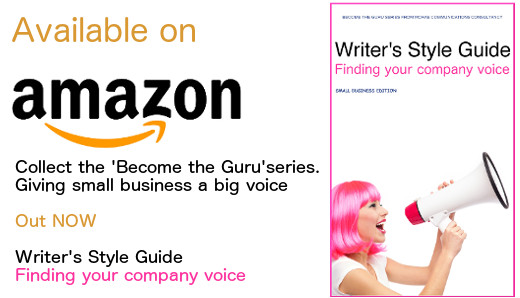That moment when a client says, “it’s just a small project. Shouldn’t take you long,” your heart sinks right? You just know the timeline they have in mind is going to force you to cut corners or force you into some straight talking before the project’s even begun.
You know what I’m talking about. As a creative, you’ve probably heard it all and more besides. Photographers (it’s just point, and click right?) designers (you just plonk that picture in the layout right, shouldn’t take long – oh and can you make his hair red), and copywriters – it’s just a couple hundred words (quick and easy right?). Erm … actually no – sometimes these things are the hardest and most complex to get right. In fact, the easier it looks – chances are the harder it is to execute – so your timeline needs to reflect that.
Nine times out of ten, such comments come from clients who have had little exposure to copywriters or designers, so they have little understanding of the ‘process’ involved to reach the desired result. And quite honestly they don’t need to. They didn’t study copywriting or photography or design. It’s not their profession. They’ve been studying in their area of expertise and that’s absolutely fine! As it should be. But they do need to appreciate that the magic doesn’t happen with a twitch of our little button noses.
Often when we’re faced with such statements, the hard worker, the people pleaser side of us just smiles and agrees.Have the confidence to know where you might be able to reduce costs and squeeze things for your client– and which areas are complete red lines never to be viewed – let alone stepped over. Also, have the confidence to advise your client what a realistic time frame might be. They may genuinely appreciate the feedback.
Sometimes it’s hard to articulate what goes on in the background – and really what client has got time to listen to all that? They just want the job done. However, understanding the process you go through yourself (as a creative), step-by-step – to achieve the desired outcome will stand you in good stead when trying to negotiate a ‘realistic’ timeline. It helps to remove all the smoke and mirrors behind what you do, especially if you want to build the trust with a new client. OK so you don’t need to share every minutia before the briefing stage – but be sure to have the details on hand if asked why it could take a few days to write a few hundred words (sometimes). Your timeline still has to take into account any number of stages, regardless of the length of content.
As an employer or a client, you may be guilty of thinking you are saving money by only giving your copywriter one or two days to get a project done. You will most certainly find this turns out to be a false economy. Squeezing the timeline and shortcutting processes means you’re missing out on some useful areas of expertise which could make all the difference in your growth strategy.
So – process – process–process. I’m slightly obsessed with Process – purely because it’s proven to work. (I have a case study on how not working to a process can blow timescales and budgets out if you need proof). One of the many valuable reasons for following a process – if you know how long each stage of the process takes, you can make some calculations as to a ‘realistic’ timescale (and consequently budget). If you would like to download our sample process document you can pick one up FREE from our online store.
So without further ado –your generic guide to working out Timelines for your next copywriting project.
Setting the timeline at the scoping & briefing stage
This is the first meeting to discuss the project. Initial questions answered on timescale, your availability and scope of the project are discussed at this stage. This is often done on the phone or email, but for larger scale, kick off projects a meeting should be set up. Remember if you’re the one hiring a copywriter who has to travel, check whether they charge out for travel time. It may be more prudent to do a telephone call or Skype.
- Mini/Simple Projects – 1 -2 hours
- Average/Complex – 2-3 hours
- Large Scale Projects – 3-5 hours
Often, some time is required to ‘live’ with the brief. At this stage, if the conversation is too general, the Copywriter should take control of their briefing document to focus the discussion. This is the stage where it helps to understand the complete process, to understand if the ‘timeline’ itself is realistic.
Research notes/read through materials/research
Before any work can be done, no matter how simple the project, the Copywriter needs to understand everything about the client. Their industry, the market they operate in, their place in the market. Who are they talking to? What do they care about? Getting under the hood of the client’s requirements is crucial to producing good copy with the minimum number of drafts (typically 3).
- Simple Projects – 2-3 hours
- Average/Complex – 3-6 hours
- Large Scale Projects – 6-10 hours
So you can see, even before any writing commences, how much time has already been committed.
Hierarch of Messaging/Key Messaging & Value Propositions
This is one of the most misunderstood elements of a copywriter’s role. More often than not a client will advise on a hierarchy of messaging which simply alludes to the type of ‘content’ they would like to include. That’s not messaging in the true sense and is not all that helpful to copywriters because it’s the copywriter’s job to figure out the weight of content – based on the Hierarchy. If you need advice on how to develop the Hierarchy of Messaging, the Key Messages and the Value Propositions, you can find more on our website.
Hierarchy of Messaging
- Simple Projects (local companies/small projects) – ½ day – 1 day
- Average/Complex (SMEs) – 1-2 days
- Large Scale Projects (launch campaigns/global brands) – Minimum 3-5 days
Key messages as they relate to each audience
- Simple Projects (local companies/small projects) – ½ day – 1 day
- Average/Complex (SMEs) – 1-2 days
- Large Scale Projects (launch campaigns/global brands) – Minimum 3-5 days
Value Propositions – what makes the product/solution attractive to the audience?
- Simple Projects (local companies/small projects) – ½ day – 1 day
- Average/Complex (SMEs) – 1-2 days
- Large Scale Projects (launch campaigns/global brands) – Minimum 3-5 days
Review and sign-off on Messaging
Messaging so important as it provides the structure for your copy. With this in mind, sign-off is necessary – make sure EVERYONE agrees the most important things to be communicated. If you have had a chance to think about the copy, it may also be useful to highlight the key points you plan to cover in your copy. It’s actually a great saving tactic – it may seem more work to the client up front, but will actually save time on written content and miscommunications later down the track.
Where possible budget some time for this round of feedback before you get started on the first draft.
First Draft
Naturally, it depends on the scale of the project. If you are working across a range of deliverables for a product launch and have a Go-to-Market date, then you may need to be running a number of projects side-by-side. Knowing the resource requirements up front is CRUCIAL to good planning, good copy within realistic deadlines.
Mini Projects: 1 day
While mini projects, such as 400-word blogs, may only take a couple of hours to write, you will still need to factor in
Simple Project: 2 days
May include words to support* a design project – i.e. where words that are not required to persuade/motivate/educate/engage an audience in a lead generation/conversion context. Little research required/ mainstream industry.
Sample projects:
- 4pp-8pp brochure
- 400-800 words editorial
- Radio or TV scripts
- Posters
- Event Flyers
Average/Complex Project: 3-5 days
May include small or ad-hoc projects which are required to persuade/motivate/educate/ engage (SEO/Metadata etc). Extensive research required/niche/specialist industry.
- 8pp-20pp brochure
- 800-1600 words editorial
- 1-6 screens of website content
Large Scale: 5 days +
- Multimedia scripts/campaigns
- More than 2 pieces of collateral
- 6+ screens of web content
Please Note: At the Draft stage, a copywriter is not concerned with proofing and editing. This is the phase of the project where everything from the brief is committed to paper. Ideas and concepts take form and generally the draft will put everything on the table to consider. It’s worth remembering many clients don’t actually know what they want until they see it written down – it’s easier at this stage for them to see what they definitely don’t want. This is valuable in itself. So ensure your clients understand the purpose of the first draft.
When you send your First Draft out for review, only send it to the key stakeholders identified for the project. It is not helpful to invite comment from Uncle Tom Cobley and all. Each of the stakeholders will generally have an area of expertise so it’s best to ask them to stick to review the draft as it relates to their area.
It’s very important to provide Reviewers with direction on what type of feedback you require from them (answer questions for further clarity etc) and also give a specific deadline to get feedback returned to you. Always allow a day or two where possible but no longer than 1 -2 weeks for larger more wieldy projects.
- Simple Projects – ½ day – 1 day
- Average/Complex (SMEs) – 1-2 days
- Large Scale Projects (launch campaigns/global brands) – 1 -2 weeks (Maximum)
Second Draft
This is the time where you try to marry up and make sense of everyone’s comments. If you are very lucky the majority of your review team will agree on changes/nature of feedback. If not, (i.e. You are dealing with a highly political organisation or two people who see things differently) – then my advice is to ensure you’re working within a transparent process. All members of the review team need to work together to provide unified feedback, so ensure everyone is always copied in the various emails until decisions are made about what to keep and what to drop.
HOWEVER – and this is a big, however, don’t allow clients to just to slash and burn content, left right and centre. The copywriter’s role is to make sure the content stays ON MESSAGE (remember our hierarchy?). The hierarchy dictates THE most important messages, that should never be cut from the draft. This hierarchy also helps the client to remember the purpose of the communication. It is the copywriter’s role to say – this must stay. Ask your client ‘In what way does this support the message?’
As you can imagine, the second draft can take a bit of time to coordinate, but again you should keep sensible time limits. Ideally, (depending on the scale of the project):
- Mini Project: 1 day
- Small Project: 1-2 days
- Average/Complex Projects: 3-5 days
- Large Projects – 5+ or as appropriate
Second Draft Review
At this stage, there should be no major surprises from either side. If the scope of a brief changes significantly then the timeline will have to be revised accordingly.
At this stage, it should be a case of mid to low-level feedback. Again, it’s very important to provide Reviewers with direction on what type of feedback you require from them at this stage and also give a specific deadline to get feedback returned to you.
Always allow a day or two where possible but no longer than 1 -2 weeks for larger more wieldy projects. A good way to approach clients or stakeholders who are repeatedly late with their feedback is to say you will be progressing to the next stage by a certain date, and if you have not heard from them, you will assume that they are happy. This is important in terms of a paper trail and accountability. Alternatively, if their feedback is absolutely crucial, make sure all stakeholders are aware that the deadline can only be met if everyone pays attention to what’s required from them. Copywriters live by their deadlines and flag slipping dates as soon as there is an issue.
- Simple Projects – ½ day – 1 day
- Average/Complex (SMEs) – 1-2 days
- Large Scale Projects (launch campaigns/global brands) – 1 -2 weeks (Maximum)
Editing –the third draft
Now you have factored in all the feedback. Your stakeholders are on board and everyone is in agreement. You may have a few tweaks here and there but basically, your copy is fairly solid. Happy Days.
Now is the time to edit and proofread – the Quality Control stage of the process.
Now it may surprise non-writers just how long editing and proofing can take. You’re not just scanning to make sure the content makes sense. You have to read each and every word – each and every line. Properly. There is so much more to editing and proofing than first meets the eye, which is why it is important to factor in enough time to do it properly. Because there is any number of items to check, it’s useful to focus on one specific area for each read through.
For example, your first read through may be to check phone numbers. This may involve calling them to check that they actually work. Or perhaps checking addresses/contact details in general – the correct spelling of names and so on. The next read through may be to check Links to website/email addresses etc. Do you have all the metadata? Keywords in the copy and headlines? All the points highlighted in a company Style Guide are proofed/reviewed at this point. Are you using gender-neutral language throughout? Are you using British or American English throughout? Is it appropriate for your audience? Have you checked all the page numbers? And so on …
You may move some paragraphs around if you are doing a structural edit, but you are not changing content – just making it tight.
This phase may also involve a certain amount of formatting – either within your Word document or within a designer’s layout. Sometimes when a designer moves the copy into the layout things get lost or misunderstood. Your role is to spot these little glitches (even if you feel you have read your content a million times already – it’s entered a new critical phase where other elements have come into the mix – along with an increased margin of error).
Finally, you are ready to proofread – Yay!
This stage of the process should NEVER be overlooked or squeezed because this is the face of the client’s business. If there are simple mistakes in the copy this is going to reflect badly. It’s important the client understands the necessity of a good proofread – at the end of the process. If you have the luxury of working in an organisation that has a copywriting team, then there should be 2 rounds of proofreading before the final document is produced.
All in all – you should allow some time for a comprehensive edit and proofread:
- Simple Projects – ½ day – 1 day
- Average/Complex (SMEs) – 1-2 days
- Large Scale Projects (launch campaigns/global brands) – 1 -2 weeks as appropriate
PHEW … YOU MADE IT
So now you and your client have a much clearer understand of how a copywriter gets from A-C. Of course, these timescales are not prescriptive in any way, but they do serve as flags to show what is missing – and what’s at stake – if you squeeze timelines beyond all usefulness.
 Send to Kindle
Send to Kindle


